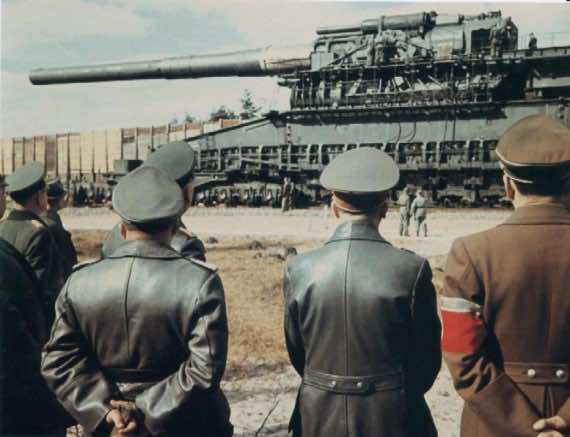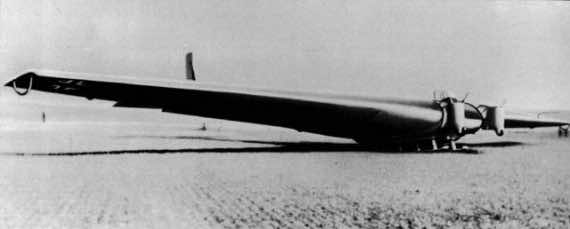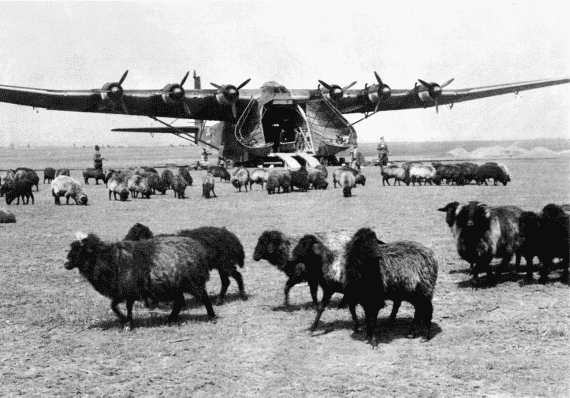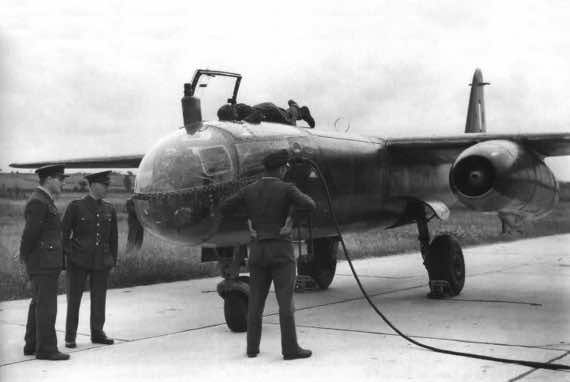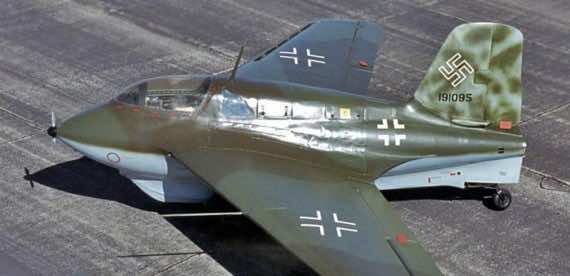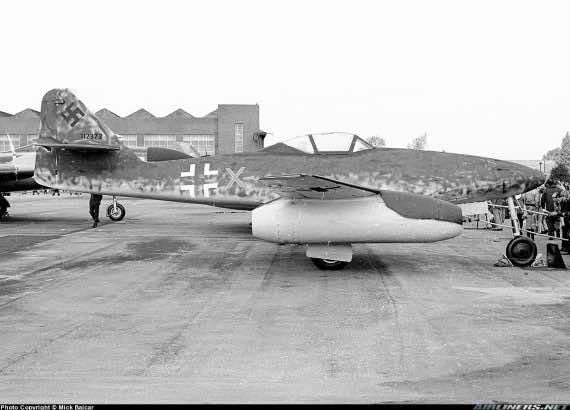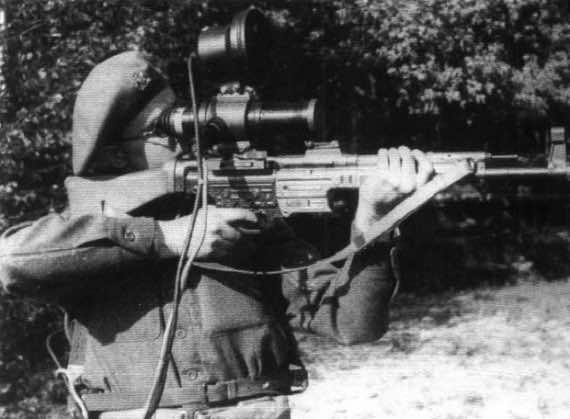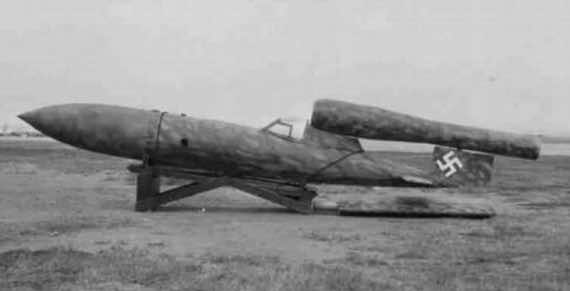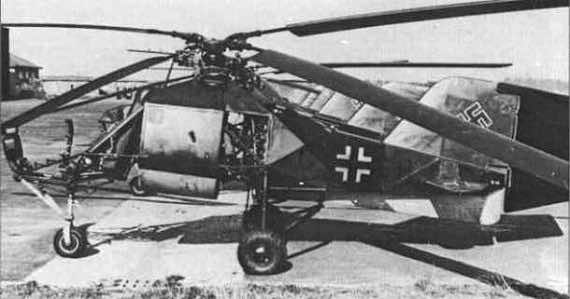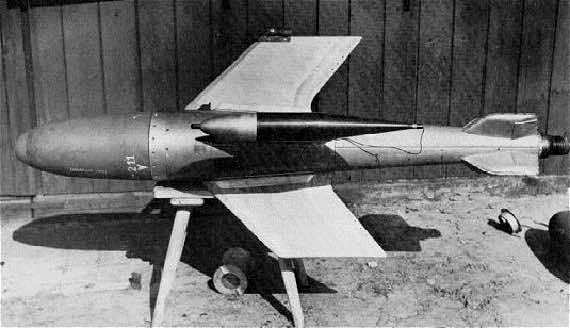The might of German technology at the onslaught of World War II spelled devastation for the rest of Europe. Their accurate artillery, large numbers of robust tanks and superior military tactics used in blitzkrieg resulted in almost all of mainland Europe bowing down towards the Third Reich. Now that they were in control of most of Europe, the Germans began their famous weapons development programs that not only made unusual tools of destructions but also directly contributed a lot towards science itself.
After the war, many of these famous German breakthroughs in engineering were applied on commercial and space exploration concepts with favorable results. But, their development was focused on making weapons, so the intention wasn’t good but the indirect outcome was.
Here are eight of the famous advanced weapons from Hitler’s programs. Some of their sizes are unbelievable while others have technology that has been difficult to develop.
1. Landkreuzer P-1500 Monster
It represented the highlight of crazy German artillery ideas that were successfully developed throughout the war. It was a jaw-dropping 42 m long, weighed almost 1500 tons with a main armament of bore 800 mm Schwerer Gustav railway gun and an operating crew of over 100 men! Secondary weapons included Howitzers, autocannons and machine guns. The weapon had no rotating turret, so it was used to be an artillery more than an absurd tank. However, it was limited to demonstrations only since it was extremely vulnerable to ever-improving air power.
2. The Junkers Ju 322 Mammut
The huge military transport glider was made by Germans to provide military supplies at crucial points. It resembled a giant flying wing and was sparingly used by the German Air Force Luftwaffe because of only two prototypes ever made. The unusually named company, Junkers was involved in other mainstream military gliders as well, but none was as powerful as this one. With an all wooden construction, this glider could carry around 20 tons of freight to sensitive areas with improvised strips. Armaments included three machines guns in separate turrets. ‘
3. The Messerschmitt Me 323 Gigant
Germans used a variety of transport gliders to be used for heavy military transport throughout the World War II. But, when came the need of airlifting heavy equipment and weapons for Operation Sea Lion, a planned invasion of Great Britain and Operation Barbarossa, a planned invasion of the Soviet Union, the need for a much bigger glider was ascertained by the Third Reich Army. The two main companies including Junkers and Messerschmitt were given 15 days to prepare proposals for such a glider and Messerschmitt was deemed successful with this design. The ambitious requirement for this project was that it should be able to carry an 88-mm artillery gun or a Panzer tank itself! This glider also reached prototype stage but was eventually scrapped because of difficulty in procuring the particular kind of wood needed in its construction and a high degree of instability in the eventual flights.
4. Aroda, Komet, and Schwalbe
These were reconnaissance, fighter and bomber jets developed by the Germans during the end years of the World War II. It is widely believed that the British were the first to make jet aircraft, and they might have been, but the first warplanes with jet engines were first made by the Nazi programs. The Komet, however, was the first rocket-powered aircraft, and this marked the beginning of the use of rockets in aviation. These proved devastating for the Allies as none was shot down in the air, and the lone Komet alone accounted for over nine kills of the enemy. Allies were eventually forced to attack them on the ground since they couldn’t do anything when they were in the air due to sheer speed.
5. The Zielgerät 1229
This was a night-based assault rifle (codename Vampir) made by the German using active infrared technology for the first time., With the help of this rifle, German troops began to attack with accuracy in the night and caused numerous problems for their adversaries. It was later on used to other rifles as well including machines guns MG 34 and MG 42. The rifle weight 2.25 kilograms but the extra battery pack weighed around 13.5 kilograms. Over three hundred guns were made and delivered to the front lines.
6. Fieseler Fi 103R
This was simply a rocket powered suicide attack aircraft called Reichenberg by the Germans. It was a version of V-1 flying bomb and was used in attacks where the pilot was given minimal training, and he was most likely to be killed or parachuted out at the last moments. It formed the Leonidas Squadron of the Luftwaffe and volunteers used to come in the program who had to pledge their lives for their missions while fully knowing that it could result in death. A 900-kg payload was attached to the aircraft.
7. Flettner Fl 282 Kolibri
The Germans did wonders in aviation technology at those times. They also introduced the first assembly lined manufactured rotor helicopter in the battlefield. Initially the Kolibri (Hummingbird) was first used for reconnaissance and airlift purposes but soon converted to battlefield use as well. The choppers played a significant role in spotting artillery and ships in the battlefield. They were so effective that even in the closing stages of the war, the military gave BMW an order of 1,000 units, but the factory was destroyed in ensuing Allied and Soviet bombing runs. The last of the hummingbirds were destroyed in combat.
8. The Ruhrstahl X-4
This was the first ever air-to-air missile developed by any nation. Although it was seriously considered, it never saw much combat even though more than 1,000 units were developed by the German contractors at the closing stage of the war. Also, the aircraft that was supposed to be using this couldn’t get out of production line so makeshift arrangements for its use were made, and it might have made some kills as well despite not even being delivered to the Luftwaffe. After the war, the guided missile technology developed by both the NATO and the Soviet Union stemmed from this initial effort of Germans.

